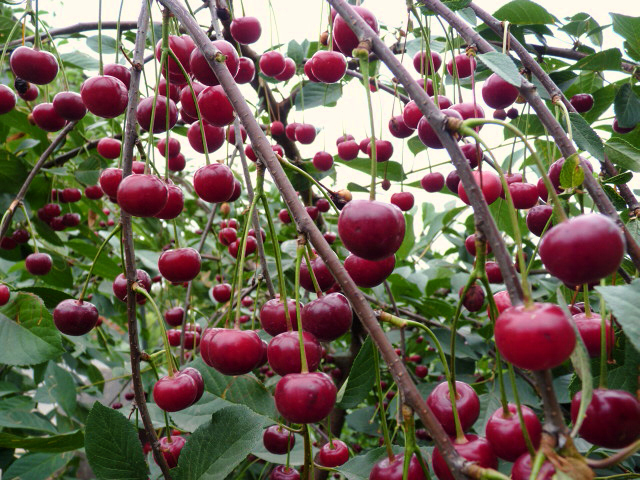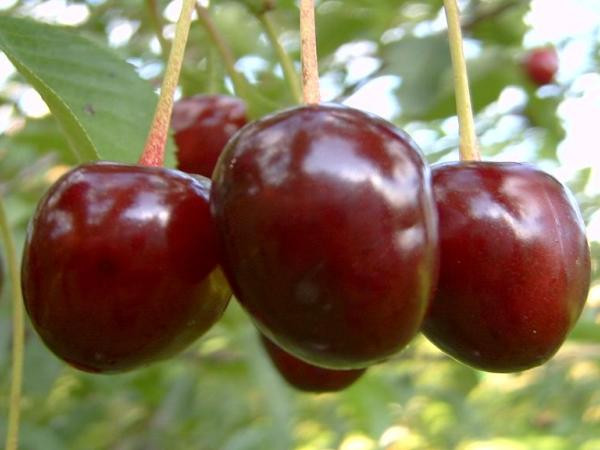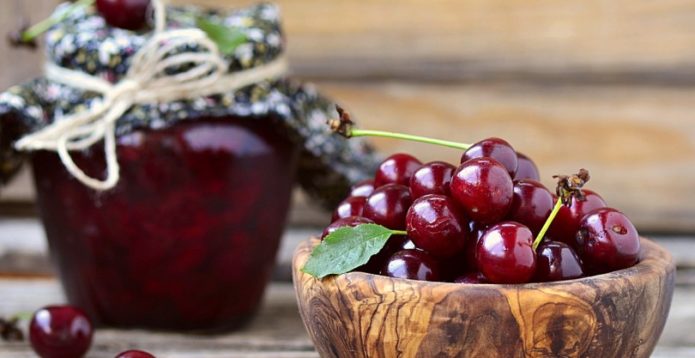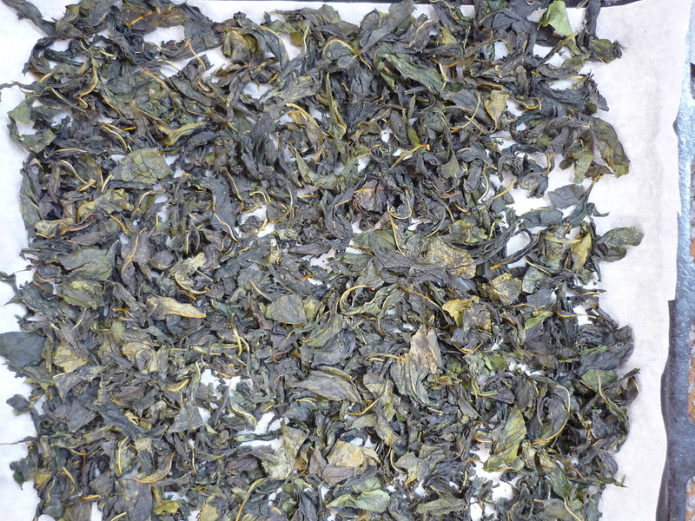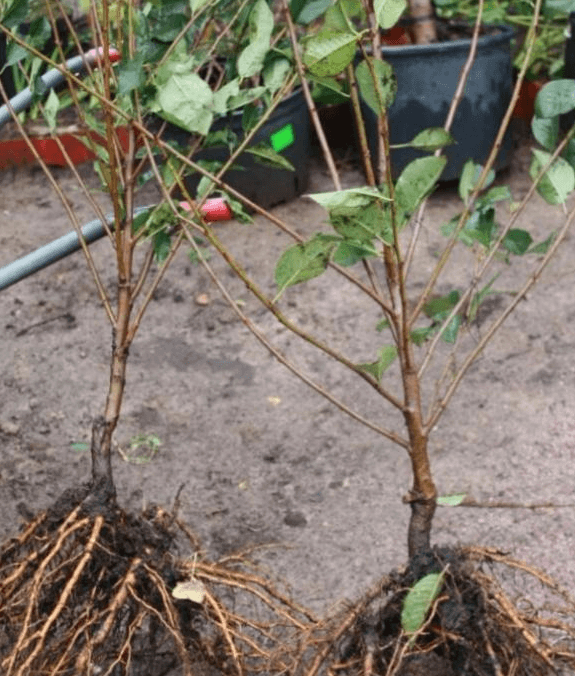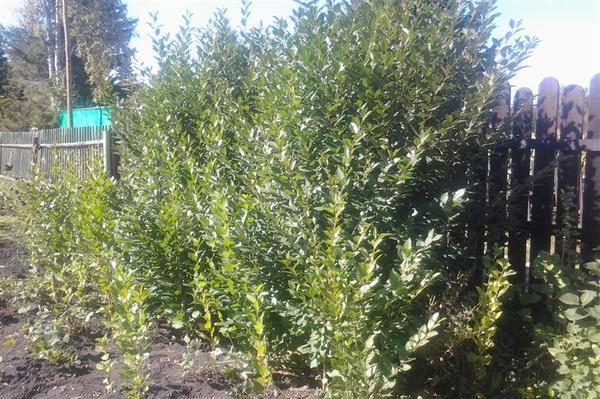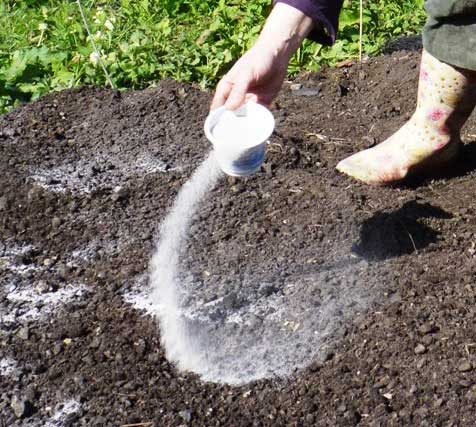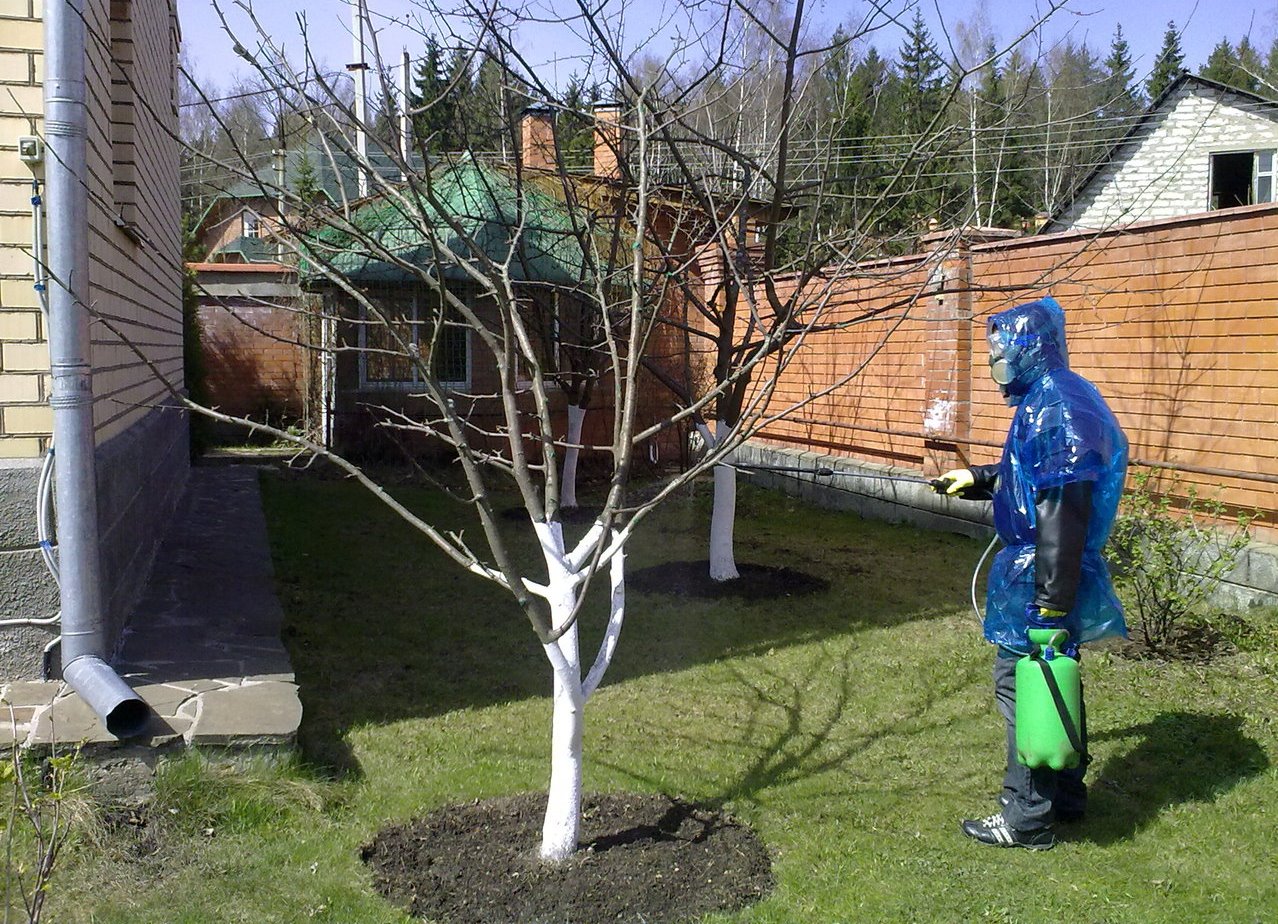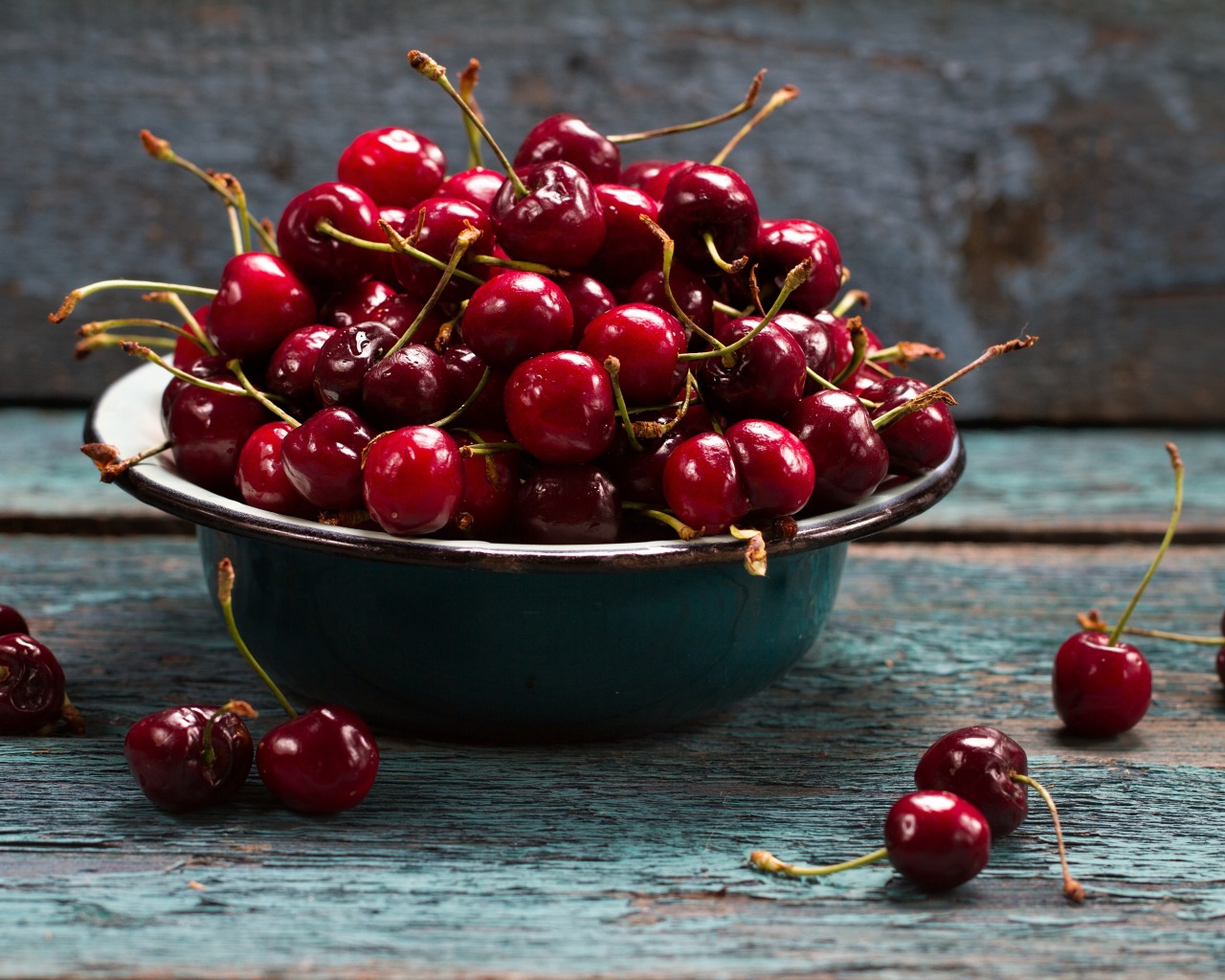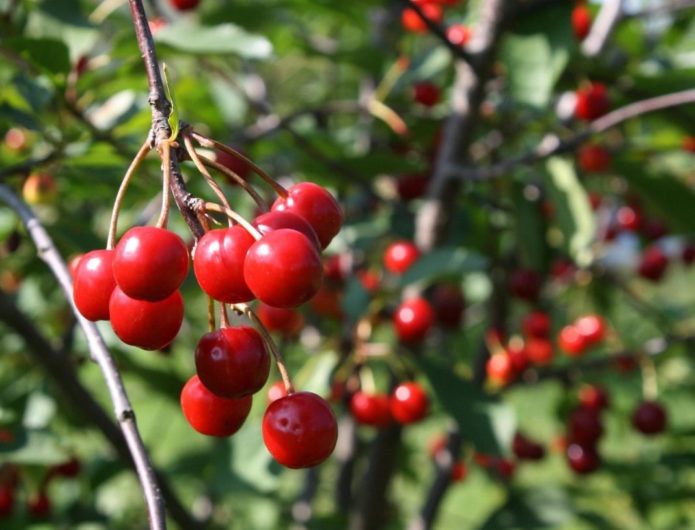Many garden plots have a cherry tree with aromatic fruits and subtle sourness. Cherry variety Rovesnitsa, which was bred 30 years ago, remains as popular in home gardens. The same age is unpretentious, resistant to diseases and drought, bears fruit abundantly, subject to the rules of agricultural technology.
Content
The history of the Rovesnitsa variety
The same age appeared by crossing the variety No. 11 Krasa Severa and Black Consumer Goods. Its authors A.F. Kolesnikov and G.B. Zhdanov. The variety was included in the State Register in 1986. From the black consumer goods, the Age of Age has inherited high productivity and frost resistance, and from the Beauty of the North - resistance to coccomycosis and large fruits of high taste.
The central black earth region of Russia is the best place for growing the Rovesnitsa variety.
Description of the variety of cherries Rovesnitsa
The same age is a variety capable of partial self-pollination by 40-50%, which guarantees a harvest under favorable weather conditions.
Self-fertile varieties of a similar ripening period - Turgenevka, Ostgeimsky, Vladimirskaya, planted nearby, increase productivity due to good pollination.
Fruiting begins in the third year after planting the seedling. The average yield of a three-year tree is up to 20 kg, and under favorable weather conditions and observance of the rules of agricultural technology, Rovesnitsa yields 9 tons per hectare. The same age is a cherry characterized by an average ripening period. Flowering falls on the 20th of May, and the ripening of fruits - in the second half of July.
Average winter hardiness. With spring frosts, partial freezing of flower buds is possible.
Wood appearance
Rovesnitsa cherries have a beautiful appearance, reminiscent of an inverted pyramid. The height of the tree does not exceed three meters. The branches and trunk are covered with dark brown bark. The crown is medium thickened. During the flowering period, up to four flowers are formed in the inflorescence. The fruits are laid on the growths of the previous year, attached to the flower stalk to the bouquet branches.
Fruit appearance
The fruits of the Age at the final stage of ripening become almost black in color. The average weight of one berry is 3 grams, and its diameter is up to 1.5 centimeters. The pulp is easily separated from the stone, the weight of which is only 0.1–0.2 grams. These qualities ensure long shelf life and high transportability of the fruit.
The tasting score of the fruit is 4.6 points. The berries are sweet to taste with an unobtrusive sourness. The high sugar content (over 11%) almost neutralizes the acid, which is only 1.5% in the fruit.
The taste of the berries attracts a large number of birds, which can lead to the complete destruction of the crop. To scare away birds, bells are hung on the branches of a tree.
Appetizing appearance and high taste of fruits are always attractive to buyers in the market. For this reason, Rovesnitsa is preferred not only by gardeners for cultivation in their private plots, but also by enterprises with the aim of collecting and selling berries in an industrial environment.
Advantages and disadvantages of the variety
The Rovesnitsa variety has one drawback: the average winter hardiness of fruit buds.
Peers have much more advantages. It is unpretentious, self-fertile, drought-resistant, practically not affected by diseases, and its tasty berries have a marketable appearance due to their high keeping quality.
Also, the appearance of the tree can be attributed to the dignity of the variety, which is covered at the end of May with many fragrant white flowers exuding an amazing aroma.
Table: advantages and disadvantages of the variety
| Advantages | disadvantages |
| Unpretentiousness | Average winter hardiness of fruit buds |
| Self-fertility | |
| Drought tolerance | |
| High resistance to fungal diseases | |
| High palatability of fruits | |
| Good transportability | |
| Good keeping quality |
Cherry blanks
Cherry berries are delicious fresh, and for the winter, housewives make many blanks from them. This berry is suitable for a variety of pastry dishes as a filling for pies or dumplings, muffins, pastries and cakes. And a spoonful of cherry jam, added to your morning yoghurt, fills it with a bright taste, creating a mood for the whole day.
During flowering, craftsmen make incredibly aromatic tea from cherry flowers and leaves. To do this, when the flowers begin to bloom, they collect the leaves and flowers from the tree, put them in a food bag, and put them in the freezer for a day - a kind of fermentation of the future cherry tea.
After a day, the frozen leaves and cherry blossom are laid out in a wooden box and allowed to dry in the open air. After 48 hours after drying, a dark, healthy and aromatic cherry tea is obtained, the benefit of which is to accelerate metabolic processes in the body.
In early spring, during the swelling of the buds, another type of healthy tea is harvested - from cherry twigs, which are washed, dried, and then cut into stems up to 8 cm long.
Video: tea from cherry twigs
Cherry liqueur has a beneficial effect on the body, the use of which in moderate doses improves the digestive system.
Features of growing and caring for cherries of the Rovesnitsa variety
Correct agrotechnology of the Covesnitsa cherry will "thank" its owner not only with good development of the tree, but also with abundant harvests.
Choosing a place for planting cherries
The key point in the agrotechnology of the Peer family is the choice of the planting site. With an open root system, seedlings are planted only in spring - in the second half of April or early May. With a closed root system, planting of seedlings is possible, from spring to September, since a young tree needs time before wintering to strengthen the root system.
When choosing a place, you should give preference to a sunny area, devoid of stagnant water. The shade slows down the development of the tree and negatively affects the taste of the fruit. Planting on the south side in front of a fence or house protects the tree from icy winds.
Saplings prefer loamy or sandy loam soil with acidity in the range of pH 6.5-7.0... Sandy soil negatively affects the development of the same age, and eventually leads to the death of the tree. A meter-long hole in width and depth, filled with fertile soil, where you can plant a young seedling, will help to correct the situation when planting in such soil.By the time the tree gains strength, the resources of the pit with fertile soil will be enough for the active development of the tree.
Planting and caring for cherries of the same age
Before planting, the seedlings are examined and the dried branches are cut off. For better rooting of seedlings, gardeners recommend keeping them in a bucket of water for five hours.
Stages of planting cherry seedlings:
- A 2-meter stake is installed on the north side of the pit.
- A mound is formed from the prepared soil mixture, consisting of 1 bucket of humus, 30 g of potassium sulfate and 200 g of superphosphate.
- Cherry roots are evenly distributed over the surface of the mound.
- The pit is filled up and the surface of the trunk circle is compacted.
- Water with 2-3 buckets of warm water.
In dry weather, the seedlings are watered as the soil dries up. Mulching around the tree with sawdust or straw will trap moisture in the soil and protect the tree from the burning sun. In the first year after planting, the grass is regularly weeded around the cherry seedling, which can "crush" it.
After planting in the first year, agronomists recommend cutting off all flowers or leaving no more than 20% on the tree. Such a measure will help the tree take root better. Then, every year, at the stage of emergence of barely emerging green fruits, you need to cut off half of the greenfinches. This is called “yield rationing”, which promotes the larger size and flavor of the remaining fruit. With the help of this manipulation, it is possible to avoid the frequency of fruiting, that is, the appearance of the crop in a year.
At the same age, like all cherries, lateral shoots grow, which are important to immediately cut off at the root. The tree spends a lot of energy on growing "young" due to the quantity of the crop and its quality.
Video: planting cherries correctly
Top dressing
Top dressing has a beneficial effect on the correct development and abundant fruiting of the same age.
For fruit growth, cherries are fertilized with organic substances. The trunk circle should be watered abundantly with water, and then compost or humus should be added in the proportion: half a bucket per 1 tree.
Table: top dressing scheme
| First feeding: before flowering | Second dressing: before fruiting | Third feeding: after fruiting |
| Before flowering, the following mineral fertilizers are applied: urea (10 g), potassium chloride (15 g), superphosphate (25 g) per 10 liters of water. | Fertilization is carried out on the basis of 1 square meter of tree trunk area. Ammonium nitrate (15-20 g), potassium (10-12 g), superphosphate (30-40 g) in a bucket of water. | Falls in autumn and should be nitrogen-free. |
Fertilizer-rich soil does not need frequent feeding, sandy and poor soils need to be fed annually.
Under cherries, any type of soil should be limed once every 5 years. For this, from 300 to 500 grams of ground limestone or dolomite flour is evenly scattered around the tree. Heavy soils require the maximum dosage, for light soils the minimum is sufficient.
Pruning cherries of the same age and preparing the tree for winter
Spring pruning of Rovesnitsa cherries is an important component of annual tree care, regulating its yield and affecting the sugar content and size of future fruits.
The basic rules for pruning cherries are as follows:
- When planting, the branches of a young tree are cut by 1/3. This is a prerequisite for faster crown laying.
- Cherry pruning is done in early spring (March or April) when the buds are still dormant.
- When pruning an entire branch, the cut should fall on its base, without leaving a hemp.
- Branches that touch the ground under the weight of the fruit should be cut off completely.
- Thinning the crown of the tree annually contributes to a significant increase in the amount of harvest and prevents damage from diseases and pests.
- Crooked and weak shoots are cut off. Only young strong and erect shoots are left.
- You cannot cut off many shoots at a time, since the tree will lose a large amount of strength for recovery. Cut off no more than ¼ of the total mass of branches.
- A tree that has reached a height of three meters is limited in growth by strong pruning of branches growing upward, which contributes to the active development of lateral branches.
By following these pruning rules, you can get a stable, large crop for decades.
Video: pruning young cherries
https://youtube.com/watch?v=fRC35crNVYs
Young seedlings must be protected from severe or early frosts, as well as possible winters with little snow. For this, the seedling is wrapped with a covering material that allows air and water to pass through, and in the area of the near-trunk circle, it is abundantly mulched with rotten manure or hay. The covering material is an alternative to whitewashing and will protect the tree from small rodents and hares.
Review of the variety Rovesnitsa
There are few reviews of the Rovesnitsa variety. The variety is not young and so firmly settled in thousands of gardens that gardeners do not attach importance to this and the passions around it have long subsided.
I was pleased with the cherry harvest (Rovesnitsa) - about 20 kg from the 2006 planting tree. It tasted slightly sour than last year.
The same age is popular in many parts of the country. This partially self-fertile variety, unpretentious in care, annually pleases gardeners with an excellent harvest. Fruit tree breeders consider Rovesnitsa cherry a classic among many varieties.

